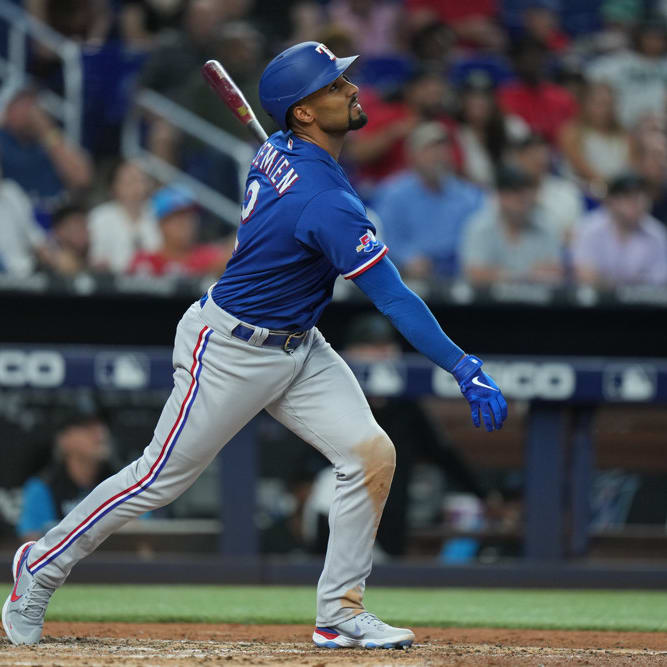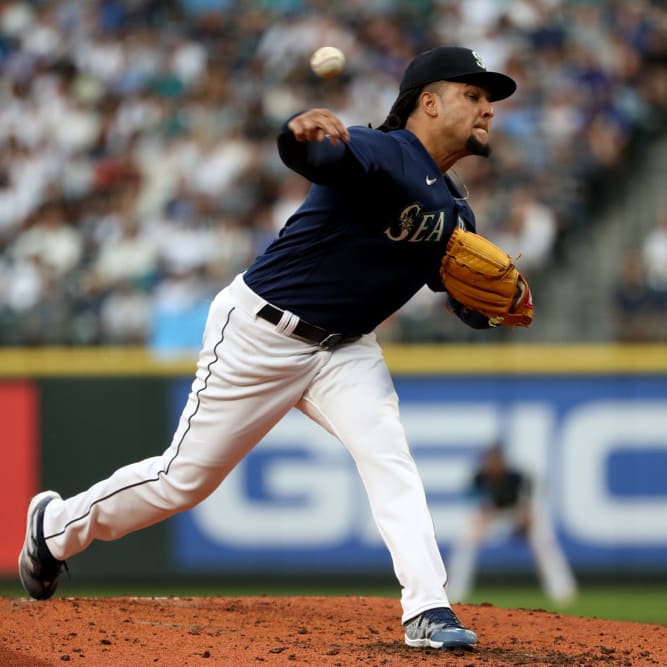This article is part of our The Z Files series.
Each week, I pose a question to the Tout Wars participants, with the replies posted on ToutWars.com. This week I asked:
Which of the following affected your draft preparation the most and which influenced it the least?
- Reports of MLB using a deadened baseball
- Concerns about starting pitcher usage
- Saves distributed among more relievers than previously
- Stolen bases continuing to wane
I am a little surprised how little heed was paid to the baseball. The reason most cited was along the lines of, "We don't know the effect, so why worry about it?"
I disagree, but more on that in a minute.
I then posted a Twitter poll, addressing the question directly to the public.
How have you adjusted your #fantasybaseball draft plans for the possibility of a deadened baseball?
— Todd Zola (@ToddZola) March 25, 2021
Over half the respondents indicated they were ignoring the new ball, while only a handful deemed it a major consideration. Personally, I'm in the middle group, viewing it as a minor consideration.
When devising a drafting strategy, it's always more effective when few if any others are doing the same thing. It seems to me an edge can be had if half the room isn't making any sort of adjustment due to the report MLB is making the ball a bit spongier, decreasing average exit velocity.
Admittedly, we don't know what will happen, but if the ball is indeed spongier, it won't be the same, right? Of course, MLB introduced another variable
Each week, I pose a question to the Tout Wars participants, with the replies posted on ToutWars.com. This week I asked:
Which of the following affected your draft preparation the most and which influenced it the least?
- Reports of MLB using a deadened baseball
- Concerns about starting pitcher usage
- Saves distributed among more relievers than previously
- Stolen bases continuing to wane
I am a little surprised how little heed was paid to the baseball. The reason most cited was along the lines of, "We don't know the effect, so why worry about it?"
I disagree, but more on that in a minute.
I then posted a Twitter poll, addressing the question directly to the public.
How have you adjusted your #fantasybaseball draft plans for the possibility of a deadened baseball?
— Todd Zola (@ToddZola) March 25, 2021
Over half the respondents indicated they were ignoring the new ball, while only a handful deemed it a major consideration. Personally, I'm in the middle group, viewing it as a minor consideration.
When devising a drafting strategy, it's always more effective when few if any others are doing the same thing. It seems to me an edge can be had if half the room isn't making any sort of adjustment due to the report MLB is making the ball a bit spongier, decreasing average exit velocity.
Admittedly, we don't know what will happen, but if the ball is indeed spongier, it won't be the same, right? Of course, MLB introduced another variable by allegedly cracking down on the resin mix pitchers apply to the ball to improve grip, but I'm skeptical anything will come of it. It just doesn't make sense to categorically ignore something of this nature.
Last week, I presented several batters profiled to lose the most homers if the dynamics turn out to match MLB's research. The take-home message wasn't to avoid those hitters, but simply don't load up on them and break a tie by drafting the other guy.
This week we'll flip the script and focus on pitchers in a position to benefit the most if homers are indeed down. The methodology was the same. The correlation for pitchers isn't as strong as for batters, but HR/FB will correlate well with average flyball distance. The ensuing hurlers all fall into the sweet spot where a ball traveling a few less feet will yield a disproportionately lower number of homers allowed. Included with each is their aggregate flyball rate and home run per flyball mark since 2018.
Luis Castillo (FB% 28.6%, HR/FB 17.2%): Castillo's steep groundball tilt keeps homers allowed in check, despite a high HR/FB level. When an uppercut swing centers a sinking pitch, maximum energy is transferred, hence the elevated HR/FB. Groundballs may keep homers down, but they result in more hits, especially when Castillo's new shortstop was moved off the position a few years ago and is a bit heavier after spending time at the hot corner. Castillo is being drafted in the Aaron Nola, Max Scherzer, Brandon Woodruff, Clayton Kershaw and Jack Flaherty tier. This isn't enough to move him to the front of the tier, but depending how you rank these arms, perhaps Castillo elevates a spot.
Edwin Diaz (FB% 41.2%, HR/FB 17%): Diaz is the only closer to make the cut. Reducing homers for him is particularly advantageous since he's both a flyball pitcher and has posted a high HR/FB the past three seasons. We normally think of this in terms of mixed leagues, but the National League closer pool is just terrible. The American League isn't much better, but even after losing Kirby Yates, the junior circuit is palatable. A softer baseball could help Diaz hold onto the closer gig in Queens.
Nathan Eovaldi (FB% 34.4%, HR/FB 16.9%): Health is obviously the wild card, but the possibility of a lower HR/FB renders Eovaldi more intriguing if the room is hesitant.
Clayton Kershaw (FB% 31.8%, HR/FB 16%): It's narrative, but after watching Kershaw dominate for so many years, I suspect batters decided to heck with it; this guy is so darned good, I'll just swing really hard in case I hit the ball. Whiffing used to be frowned upon, but now there is no shame in striking out. If the swing-from-the-heels approach is less effective, perhaps batters back off a bit. As with Castillo, it's more a tiebreaker than a dealmaker for me.
Zach Eflin (FB% 35.9%, HR/FB 15%): Eflin is already a popular sleeper. Hmm, is that an oxymoron? Allowing a couple fewer homers just adds to the appeal.
Mike Fiers (FB% 40.2%, HR/FB 14.9%): Fiers injury has pushed him even further down cheat sheets, though he is expected to debut in mid-April. He's still nothing more than a matchup play, especially at home, but maybe this makes him a free agent target for when he gets back.
Shane Bieber (FB% 33.1%, HR/FB 14.7%): Like another reason was needed to like Bieber.
Gerrit Cole (FB% 38.7%, HR/FB 14.7%): This is actually important if you're in a position to draft Cole or Jacob deGrom. Most rank deGrom ahead of Cole based on superior ratios, despite the fact Cole is likely to punch out more batters. If Cole's ERA drops, he leapfrogs deGrom into the top pitching spot for me.
Dylan Bundy (FB% 42.9%, HR/FB 14.5%): Bundy is another flyball guy, so he could benefit even more than those inducing more grounders. He's being drafted in a tier with Pablo Lopez, Julio Urias, Sandy Alcantara and Kevin Gausman. At this point in the rankings, the delta between players is small, putting drafters in a good spot to play the "What if?" game with Bundy.
Tanner Roark (FB% 36.3%, HR/FB 14.2%): Roark is similar to Fiers but without the injury. Perhaps this loosens the streaming reins just a bit.
Matthew Boyd (FB% 44.6%, HR/FB 14.1%): Just as I'm out, I find something to draw me back in. Boyd truthers are dwindling, but that serves to lower his cost into the streaming range. I wish his first three starts were more appealing, but the southpaw is slated to draw Shane Bieber at home on Opening Day, followed by another Motown matchup with Kenta Maeda before visiting Zack Greinke and the Astros. Maybe the play is seeing how Boyd fares early, and if he struggles, buy low. Ideally, you want him to pitch well but incur some bad luck.
Lucas Giolito (FB% 38.9%, HR/FB 13.8%): The optimist could use this data to rationalize Giolito's rise to the No. 4 pitcher on the board. I'm generally optimistic, so sure, why not. At the very least, he scoots ahead of Trevor Bauer, who stands to be hurt by the "What if?" game with respect to checking the ball for illegal substances.
Sonny Gray (FB% 28.1%, HR/FB 13.7%): Gray doesn't have an issue with homers, but his average flyball distance came out in the sweet spot to benefit, so here he is. His recent price has dropped, but he's throwing bullpens and may only miss one start, or perhaps just be pushed back a few days.
Blake Snell (FB% 36%, HR/FB 13.4%): Snell also doesn't have a problem with keeping opposing batters in the yard, but even allowing one or two fewer dingers is a good thing.
To reiterate, this list is more of a yellow light than full green when it comes to rostering these arms ahead of their peers. I just think the new ball is a factor worth considering and not dismissing out of hand.










